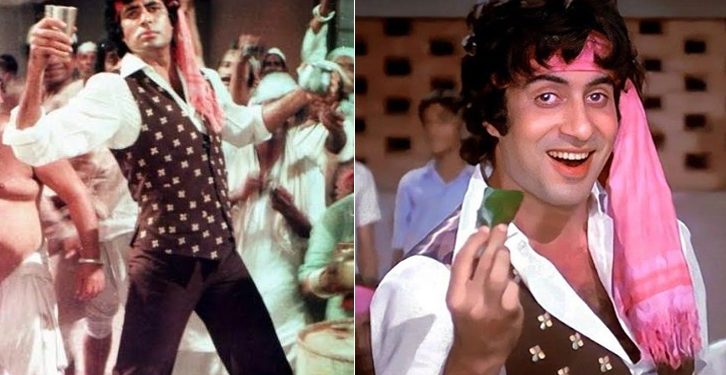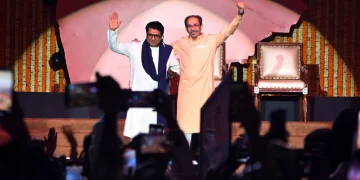Mumbai: Bell bottoms (and sleeves), polka dots, androgynous clothing, psychedelic patterns — ’70s fashion was flamboyantly eye-catching and Hindi films of the decade replicate it faithfully.
Iconic crime thriller “Don” (1978) is a case in point with even the supporting actor dressed in monogrammed shirts and the villains sporting trendy T-shirts and waistcoats. Why was then poor Amitabh Bachchan fated to wear the same costume for the entire last hour-plus of the film?
Those who have seen the film may recall that Bachchan, as street performer Vijay, who is impersonating the killed ‘Don’, is tastefully garbed in a beige coat, brown trousers, a brown-patterned waistcoat, a white shirt, and a canary yellow bowtie, when he sashays in to sing “Arre diwanon mujhe pehchano…” at a party held to celebrate him regaining his memory. This is roughly the first hour and half mark, or around 96 minutes into the 166-minute film.
From then on till the end, as the police raid the hideout, the DSP who knows his secret is killed, leaving Vijay trapped as the fake don. He manages to escape from the gang after engineering a brawl in the prisoner transport, eludes the police, sings an iconic song, learns who the real villain is, engages in at least two scraps before the climactic free-for-all at a graveyard, and things end happily for the hero, heroine, and others.
Thoughout all this, he is seen wearing the same costume. The coat and the bowtie, though, disappear along the course, and Vijay picks up a ‘gamchha’ on the way — probably from his eastern UP compatriots — and ties in around the head like a bandana sometimes.
The reason why Bachchan was forced to wear the same clothes was rooted in the intention of the scriptwriters, the legendary Salim-Javed, to retain control over the spirit of their narrative even if they had offered it nearly gratis.
For this, we need to take a slight detour into the making of “Don”, whose brisk pace, sharp dialogues and timeless finesse made it a fit candidate for remakes.
Bachchan, in his first abortive foray into films in 1967, had met Manoj Kumar, who took a liking for him, more so after coming to know that he was the son of Harivansh Rai Bachchan, whose poetry he appreciated.
Bachchan eventually found fame with “Zanjeer”, but Manoj Kumar cast him in “Roti Kapda Aur Makaan” (1974). There, Bachchan got to know Manoj Kumar’s cinematographer Nariman Irani, who was a producer as well and had made a huge loss on his last film. Hearing about it, Bachchan and Zeenat Aman offered to act in his next film, and Manoj Kumar’s assistant director, Chandra Barot, volunteered to helm it.
For the script, Irani and Barot approached the up-and-coming Salim-Javed and sought their help. The writers offered them a script that everyone in the industry had rejected, but Irani and Barot found it suitable and started work on it.
Irani, meanwhile, died in a set accident and Barot and the actors were more determined than ever to complete the film successfully, so they could help his family.
When the film was done, Barot showed it to his mentor, Manoj Kumar, who observed that the last hour was too fast-paced and could do with two songs to alleviate the tension a bit. The director went back to the script writers who conceded the point but held that one song would be enough.
That is how the iconic “Khaike Paan Banaraswala” became a part of the film — and though shot and incorporated later, it fits so seamlessly that it appears it was part of the original.
Bachchan, too, had a request. As he was wearing the same clothes for quite some time, could the writers facilitate his paramour Roma (Zeenat) getting him a set of new ones when she appears to meet him, and a police patrol sends them scurrying to where the UP-walas are having a sing-song.
Salim-Javed put their foot down here, contending that this was unnecessary and would compromise the anxiety and terror felt by Vijay as he sought to elude both the police and the smugglers’ gang, and manage to establish his innocence.
Whether convinced or feeling unable to contest the point, Bachchan backed down — and stayed in the same clothes.
It also must be mentioned that “Don” was initially deemed a failure, but by the second week, it began picking up pace. The inclusion of the “Khaike paan…” bolstered it. And Bachchan’s costume — the white shirt stayed pristine bright throughout — didn’t bother the audience.
IANS






































